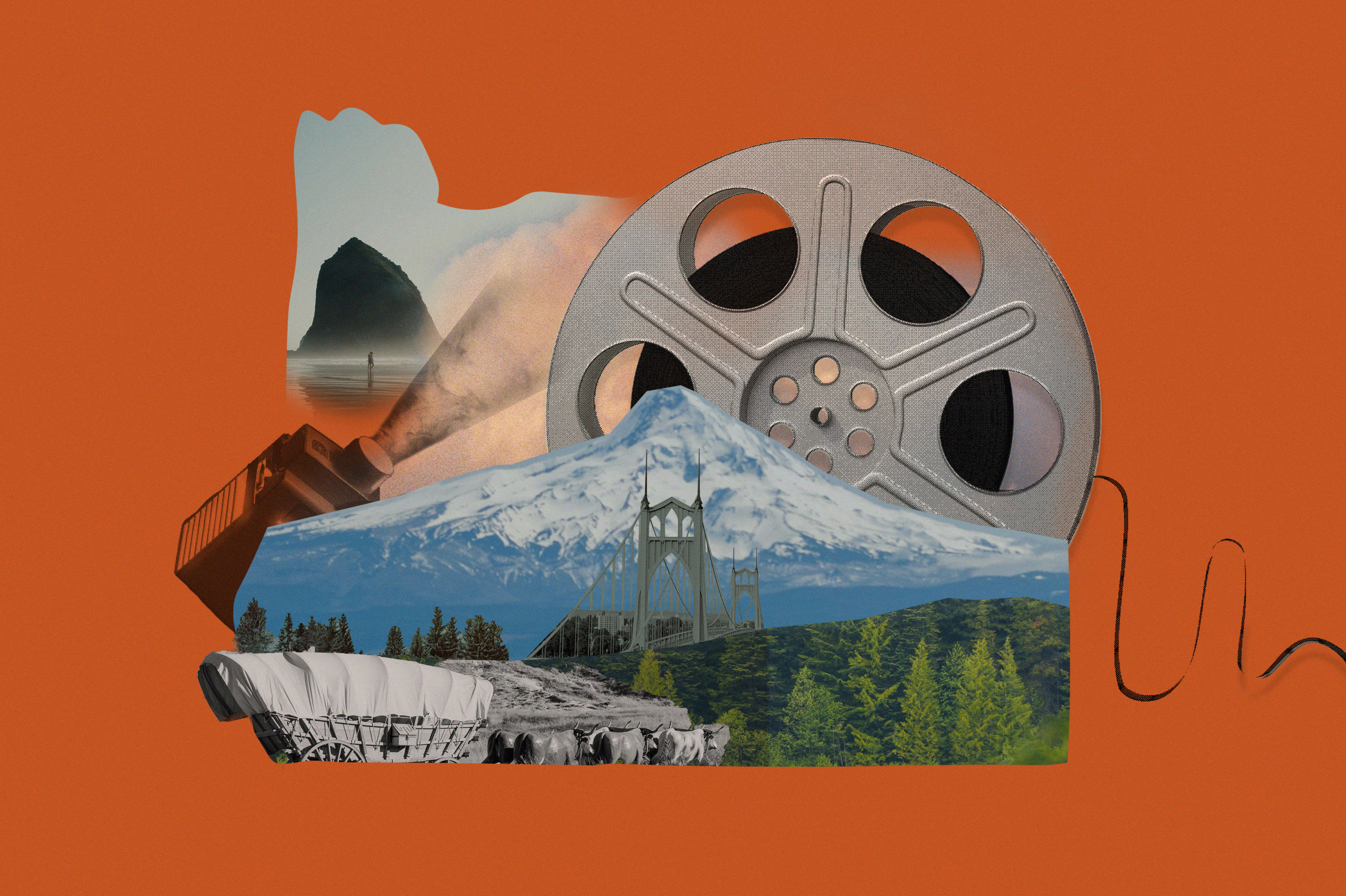Close Range
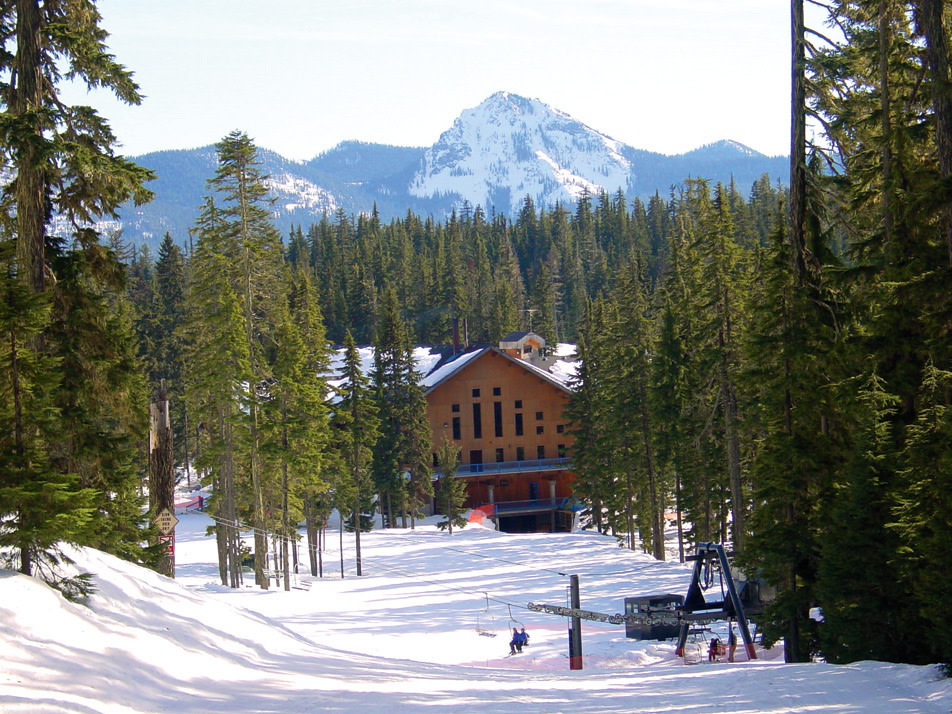
WILLAMETTE PASS
Oakridge, OR
MOST POWDER HOUNDS find it darn-near impossible to understand why anyone would choose to spend a central Oregon ski day at the smaller steep of Willamette Pass when Mount Bachelor is but an hour-and-a-half away by car. But that kind of thinking is precisely what makes Willamette Pass an idyllic escape: While the crowds swarm all over Bachelor—and shell out nearly $60 per person for the privilege—you’ll be gliding onto line-free lifts and tackling this snowfield’s respectable 1,563 vertical feet for a price even a cash-strapped family can afford.
Located 67 miles east of Eugene, just off the wide and well-plowed Rte 58, Willamette Pass admittedly doesn’t have the driest snow in the state, but the resort owners have come up with a creative, consumer-friendly solution to handle the area’s notoriously mercurial weather: They offer lift tickets by the hour, the only resort in Oregon to do so. Should it seem like the snow might morph into slush by the afternoon, simply purchase a $20 ticket good for two hours, which is plenty of time to hit the 50-degree pitch of the black-diamond run R.T.S. or the expert lines that plunge off the backside.
You needn’t be on an adrenaline-fueled ski mission to enjoy the pass’s dual peaks, however. The mountain has 6 green and 13 blue runs—just enough for a full day of schussing—and down near the base, there’s a squeal-inducing tubing hill for your parka-clad tykes. Even the cross-country set has ample space to roam on the resort’s west side, where 12 miles of groomed trails wend through the firs. This nexus also is the jumping-off point for the placid 4.5-mile trip to Gold Lake, a halcyon spot to contemplate winter’s landscape-transforming majesty.
Hardier adventurers should make a stop at the Gold Lake Sno-Park warming hut, which doubles as the Willamette Backcountry Ski Patrol headquarters. Here you can pick up maps for an additional 80 miles of cross-country and snowshoe trails that weave through the pass, as well as information on the seven overnight shelters hidden among the towering firs of the Willamette National Forest.
Considerably more civilized accommodations can be had in one of the 12 cabins surrounding Odell Lake Lodge. The cabins are spare, but you’ll hardly notice, since you’ll be spending your evenings in the 1940s-era lodge, tucking into a slice of homemade pie and warming yourself by the gaping stone fireplace. This is just the place to plot the next day’s backcountry foray into Diamond Peak Wilderness, where the bowls of the 8,700-foot peak lure only the savviest of skiers—those who have discovered that this gem on the front lines of the Cascade Range offers far grander possibilities than its small-time reputation suggests.
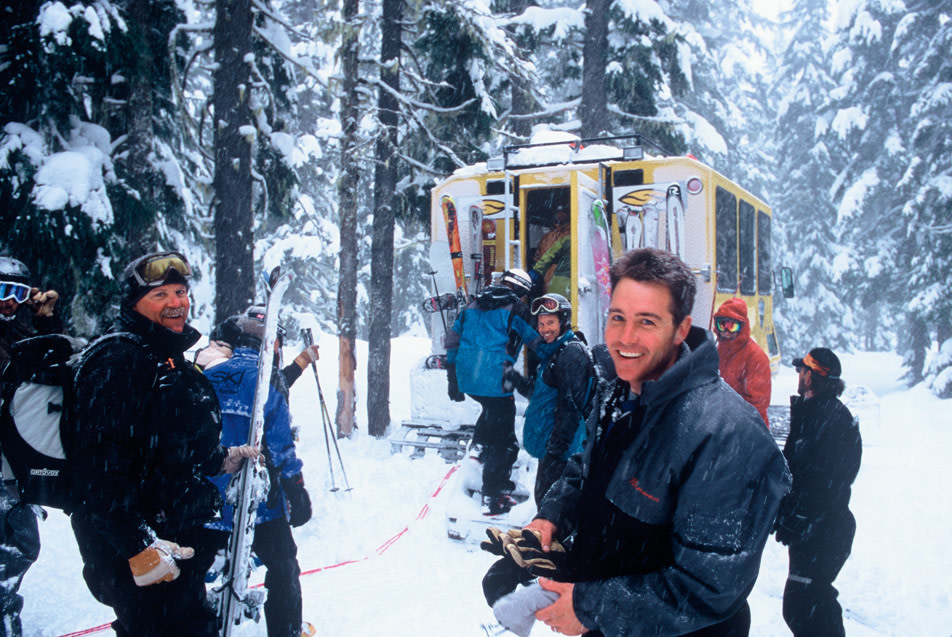
MOUNT BAILEY
Diamond Lake, OR
AT LEAST ONCE in your lifetime, you must book a ski day on 8,300-foot-high Mount Bailey; the experience is likely the closest you’ll ever come to skiing your own private mountain. With no lifts marring its slopes and no lodge to attract the crowds, Bailey is served solely by Sno-Cat and thus hosts no more than a dozen skiers per day.
In between the 30-minute rides up the hill in the tireless (and heated!) canary-yellow cat, expert skiers with legs of steel can log up to 20,000 vertical feet. Such exclusivity is matched only by the outfit’s stellar guides, who pack and carry everything you’ll need, from bag lunches to avalanche beacons. More important, they’ll deftly steer you to the best lines, which streak down all sides of this dormant volcano—and course through 27 different avalanche chutes, as well as glades of hemlock and fir. Sure, daily tickets are nearly as steep as the terrain, but then you’ll never face the disappointment that often befalls those who book heli-skiing trips: Sno-Cats can bully up the mountains even in a powder-dumping storm.
Trips to Mount Bailey convene at Diamond Lake Resort, where skiers (and bevies of snowmobilers who use a nearby trail system) typically overnight before the cat’s 7 a.m. departure time. Considering that Diamond Lake bills itself as a "blue-collar resort, with middle of the road accommodations," you can’t expect luxury here (much less mints on your pillow), but after skiing with the cat all day, even spartan cabins or motel-style rooms are a welcome rest stop for a body weary from a hardworking day of pure downhill pleasure.
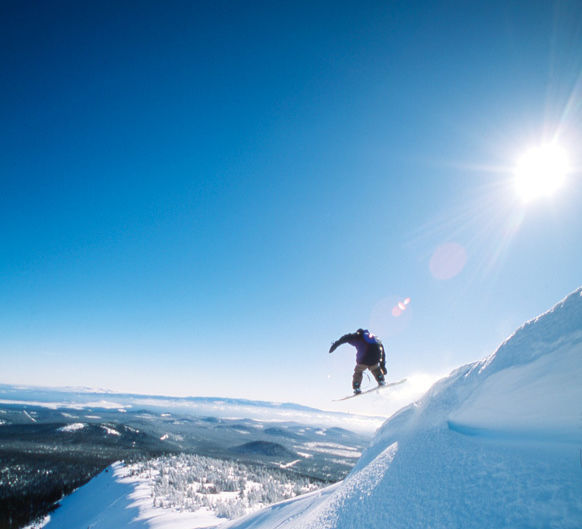
Image: Mark Gamba
TUMALO MOUNTAIN
Bend, OR
DON’T WANT TO pony up $56 for the lift ticket at Mount Bachelor, but still want to spend a ski weekend in Bend? Then embrace the DIY culture and head into the most accessible part of Bend’s backcountry, located across the street from Bachelor’s parking lot. From the Dutchman Flat Sno-Park across Cascade Lakes Hwy, a hike on climbing skins or snowshoes puts you atop Tumalo Mountain, a 7,775-foot conical butte that serves as a secret powder cache for local Benders (first-timers will want to go with someone who knows the trail). With breathtaking views of the Three Sisters Wilderness and at least 600 vertical feet of steeps on the backside, you’ll hardly be left wanting more. Unless of course you forgot your Thermos, in which case you can always race across the street to the lodge at Bachelor for a cup of hot cocoa before you tackle Tumalo again.
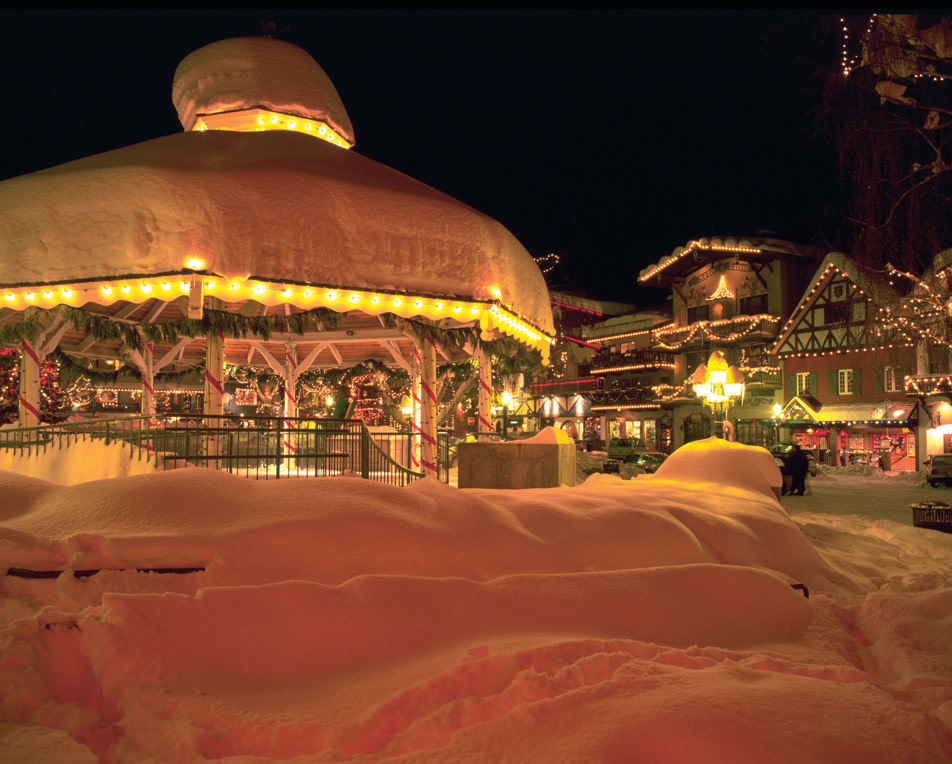
LEAVENWORTH SKI HILL
Leavenworth, WA
THERE’S NO POLITE way to say it: The town of Leavenworth, which in the 1960s decided to turn itself into a Bavarian village (right down to a lederhosen-wearing octogenarian who blows an alpenhorn each morning), is a weird place. Like, really weird. But amid the Wiener schnitzels, the nutcrackers in the windows, the oompah bands playing in the town’s gazebo and the ski hill just a mile and a half from downtown, it’s also the kind of place that can make your kids as giddy for the onset of winter as they are for the school year’s end.
On a typical winter weekend, some 500 visitors tromp around this gingerbread hamlet, where wealthy, fur-clad Seattle vacationers once arrived by train to watch ski-jumping competitions and take a thrilling turn on the toboggan run. Today the 70-year-old Leavenworth Ski Hill, tucked into a sun-catching North Cascades notch, manages to pack four surface lifts, two alpine runs, a slalom course, a tubing hill and two bona fide ski jumps onto its lowly 400-vertical-foot slope.
While other ski areas have endeavored to expand and glamorize, Leavenworth remains a humble place: Duck into the single-room 1932 Civilian Conservation Corps-built lodge, and you’ll likely find apple-cheeked kids drawing their woolen socks before the great stone fireplace. The whole outfit is kept running by volunteers from the Leavenworth Winter Sports Club, and on winter weekends and Wednesday and Friday nights (the only times the ski hill is open), they cheerily staff the lift-ticket booths and the lodge’s snack counter, where a hot dog and a hot cocoa can be had for the change in your pocket.
Eventually, however, you might have to explain to your kids what’s going on, what with all the tuba music and short leather pants. Here’s the deal: When the local Bavarians noticed that their surrounding Cascade peaks—soaring 7,000 feet above the valley floor—resembled the arduous landscape of the Austrian Alps, a handful of businesses decided to refurbish their façades in Alpine style. Lo and behold, some tourists found the idea of a Bavarian village fashionable, and soon the rest of the town followed suit.
The Bavarians don’t have a lock on the town’s Euro vibe, however: Leavenworth is also a small-time destination for Nordic skiing (more than 15 miles of groomed trails weave through the valley) and also Nordic ski jumping. Although the original 90-meter-long competition ramp was dismantled long ago, the hill still boasts more doable 15- and 27-meter jumping hills where you (yes, you) can test your aerial mettle. Ask around the lodge for Kjell Bakke, the wiry, 74-year-old local jumping guru—whose father, Magnus Bakke, helped build this place—and he’ll gladly show you the finer points of launching yourself into the Cascades’ frosty mountain air.
Afterward, hit the town center to explore shops filled with goofy Germanic gewgaws, or perhaps to have a pint of ale at the München Haus, an authentic German beer garden and a fine place to raise a glass in appreciation of the locals who, after all, are willing to live in a real-world Grimm’s fairy tale—all for your pleasure.
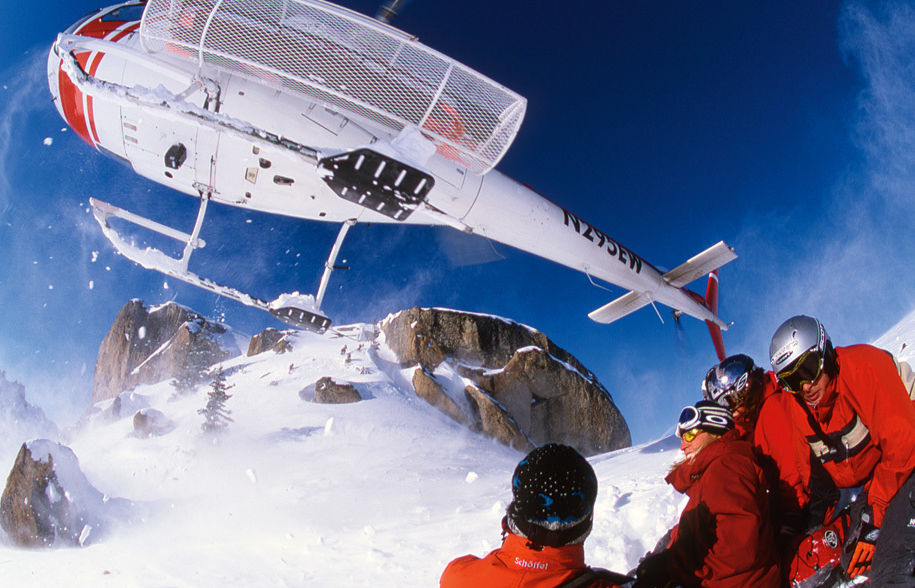
Image: Paul Morrison
NORTH CASCADE HELI-SKIING
Mazama, WA
IF YOU’RE GIVEN to imagining yourself as a ski hero, the sort of person who blasts through hip-deep powder in a pristine, rime-encrusted wilderness, then the heart of the North Cascades could become your fantasyland and North Cascade Heli-Skiing your go-to chauffeur. Based out of central Washington’s Nordic paradise, the Methow Valley, the outfitter’s three choppers have access to some 300,000 acres of terrain that boasts the most densely glaciated peaks in the Lower 48.
Should you and your cohorts for the day have the skills of Jonny Moseley, then North Cascade owner Ken Brooks and his staff can deposit you atop 9,000-foot peaks and steer you to epic, thigh-frying runs that’ll net you up to 4,000 vertical feet. And should your bank account allow, you can upgrade your mountain reverie from a single day of heli-skiing to a four-day stay at the outfit’s solitary Barron Yurt, which each year they erect anew at a prime alpine locale. Brooks will also pick you up on the range’s west side, near the North Cascades Highway (only two hours from Seattle), which, though it’ll cost you, can shave roughly two hours off your drive—a fine option for those who feel that off-piste time is more valuable than money.
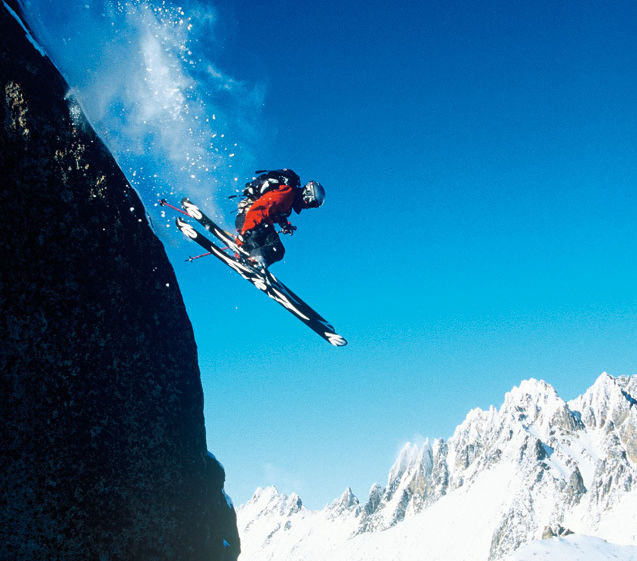
Image: Paul Morrison
MEANY LODGE
Easton, WA
RARE IS THE family-friendly wintertime outing where getting there is half the fun, but Meany Lodge, about 60 miles east of Seattle on I-90, is just such a place. Guests of Meany (which is only open on weekends) rendezvous with a Sno-Cat early Saturday morning at Crystal Springs Sno-Park, and after eveyone has piled in, the driver rumbles up a scenic three-mile trail to the four-story A-frame lodge. Seats near the cat’s exits are prime real estate, since kids perched there will be among the first to dash upstairs to claim one of the 90 bunks, and the first to race out the door to line up at the resort’s rope tows—including one that’s among the oldest in Washington state. Though this antiquated tow requires riders to clamp in via an odd system seldom seen since the 1950s, it nonetheless speeds a quarter-mile up the 500-vertical-foot slope at an exhilarating 15 miles per hour. Spills are common, but it’s all in good fun, and once up top, everybody scrambles to make fresh tracks on 32 named runs that have remained untouched all week.
For one flat rate, visitors at Meany get two days of skiing and dormitory-style accommodations in the modest lodge, run since 1928 by the Mountaineers, a Seattle climbing club. Meals are included, though you have to wash your own dishes and, as there is no television or Internet access, provide your own entertainment. Therefore, guests ballyhoo just like they did prior to the digital age—with dancing, card games, ping-pong or (believe it or not) actual human conversation—until lights-out at 10 p.m. When it comes time to depart, even leaving Meany is a blast, as the weekend’s 75 to 80 visitors once again either clamber aboard the 30-passenger Sno-Cat or grab onto the rope being towed in its snowy wake for the most delightful return to a parking lot you’re ever likely to experience.

WALLOWA ALPINE HUTS
Joseph, OR
SOMEWHERE IN THE maze of domed and jagged peaks that ring northeastern Oregon’s Eagle Cap Wilderness lies a tiny yurt village, built just last month by three ski guides and a local fix-it man named Connelly Brown. During the summer, Brown’s the guy area residents like to call when they need to have their showers regrouted. But when winter rolls around, he trades his Carhartts for a pair of Marmot bibs and spends his days guiding hard-core powder seekers to the very best runs in his tranquil, craggy backyard wilderness.
Aided by a string of pack mules, Brown and his crew build the Wallowa Alpine Huts anew each year, just about the time the snow starts to fall in the Eagle Cap. Though it’s a time-consuming endeavor, the yurts make for the ultimate wilderness base and allow skiers relatively easy access to some 19 peaks over 9,000 feet. It’s also one of the only ways to experience the Wallowas’ seemingly endless network of chutes and steeps and whisper-light snow, reminiscent of the Grand Tetons. Thanks to their remote location, no big ski resort has ever materialized near this range. "We’re just so far at the end of the road, no one ever bothered with it," says Brown, the self-described owner, chef and yurtmeister. "This truly is a mecca for human-powered skiing."
A typical four- to five-day trip to the Wallowa Alpine Huts begins with four miles of skinning up a horse trail into McCully Basin, a broad U-shaped valley where, this year, Brown’s clump of circular yurts rests amid snowdrifts and spruce forest, about a thousand feet below the tree line. The mess hall occupies one of the four yurts; two serve as bunkhouses; and the fourth is home to a wood-fired backcountry sauna—something you’ll be glad Brown thought of after a day logging 3,000 to 5,000 feet of vertical.
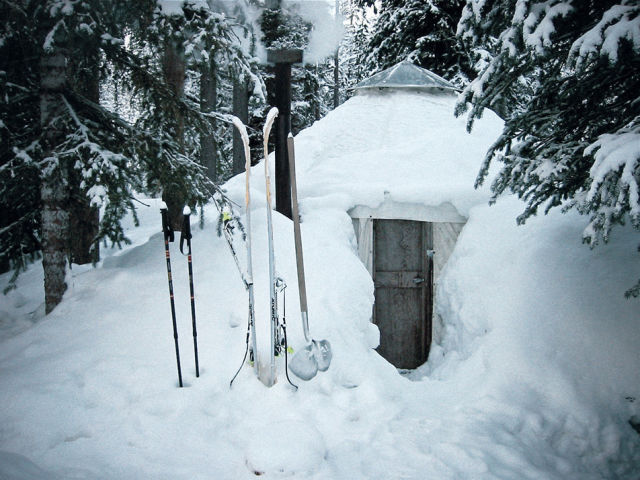
Image: Jim Golden 2007
Thankfully, guides haul in all the food and water you’ll need, as well as cots and woodstoves (everything, in fact, except your clothes, personal items and your private stash of whiskey) ahead of time—an act of human pack-muling that assures you’ll be well-rested before a day out in the basin. With a maximum of 10 skiers and 3 guides per trip, everyone can seek out their own place among the open steeps or gun down the tree-choked chute of their dreams in the wilds of the Eagle Cap backcountry. Each epic descent you make will take you through virgin snow. "Here in the Wallowas, we never ski the same runs twice," says Brown. "We’re kinda snobs that way. We say, ‘If you ski over another track, we’ve made a mistake.’ "
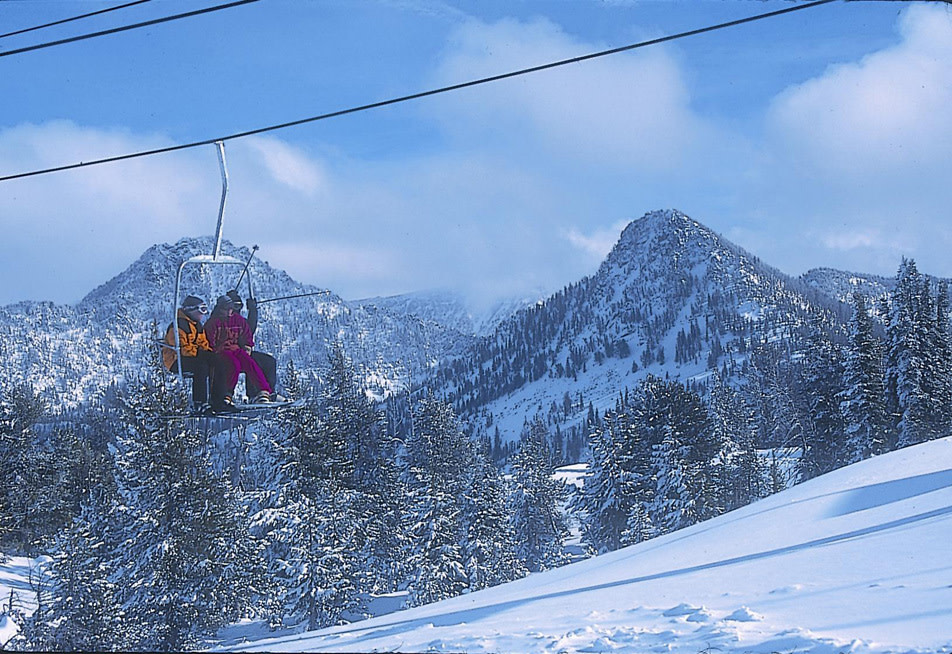
SKI ANTHONY LAKES
North Powder, OR
WITH JUST ONE triple-chair lift, two surface lifts and a 900 vertical feet, diminutive Ski Anthony Lakes, located across a nameless ridge in eastern Oregon’s Elkhorn Range, hardly looks like great skiing on paper—until you find out that it boasts the lightest, driest snow this side of Salt Lake City and that days of crisp, bright sunshine follow all-night powder dumps with uncanny reliability. And though they may be loath to admit it (or spill their secret ski haunt), many are the Benders who regularly drive the 250 miles past Bachelor in search of a less hectic mountain experience with deep, backcountry snows.
Beginners will, no doubt, find all the black-diamond runs on the trail map daunting (10 of 21 trails are ranked expert), but with free (yes, free) lessons accompanying rentals, enormous south-facing picture windows in the lodge and batch after batch of fresh-baked cinnamon rolls sliding out of the oven, even milquetoasts will find their spot in the sun here.
But it’s the off-piste possibilities that pique most Anthony Lakes skiers’ interest. Three separate peaks are within hiking distance of the parking lot or accessible by traverse from the top of the chair with an $8 single-ride ticket. If you catch the mountain right after a big storm, consider booking passage to the unblemished backside vertical on the Sno-Cat. While it’s not quite as inexpensive as it was six years ago—when locals used to squeeze hayride-style into the old open-air cat wagon for $20—the new closed-cabin, heated ride, which once plied the backcountry at Vail, still delivers enthusiasts to legendary powder runs for $190 per day.
FERGUSON RIDGE
Joseph, OR
EVERY SATURDAY MORNING during winter, locals from Enterprise and Joseph line up by the T-bar at Ferguson Ridge, aka Fergi, to reap the snowy rewards deposited by midweek storms atop the 5,800-foot-high ridge. A mere eight miles from downtown Joseph on the northern cusp of the Wallowas, this little blip of a ski mountain may have just seven runs and 600 vertical feet, and it may be open only on weekends and holidays—but as one of Oregon’s two volunteer-operated ski hills, no other resort better embodies rural Oregon’s independent spirit. In exchange for lift tickets, local skiers clear brush, work the T-lift or run the rental shop—and those who don’t? Well, they simply pony up the $8 lift-ticket price like everyone else.
For their weekly date with fresh powder, locals have Gardner Locke to thank. The snow-obsessed local engineer purchased 280 acres on the ridge in 1983, and subsequently leased it to the Eagle Cap Ski Club for a whopping $1 a year. Since then, the club has built a small rental shop with picnic tables out front to serve as the cafeteria; carved out a humble half-pipe for the snowboarders as a nod to the Gen Y-ers; and added a used T-bar purchased from Schweitzer that now runs in conjunction with the rope tow. Other than that, little else has changed on the ridge, from where the top you can see all the way to Idaho and envision what American skiing was like in the 1930s, when ski lifts were built by farmers rather than Swiss engineers, and you’d never dream of heading out for a day at the hill without packing your own lunch.
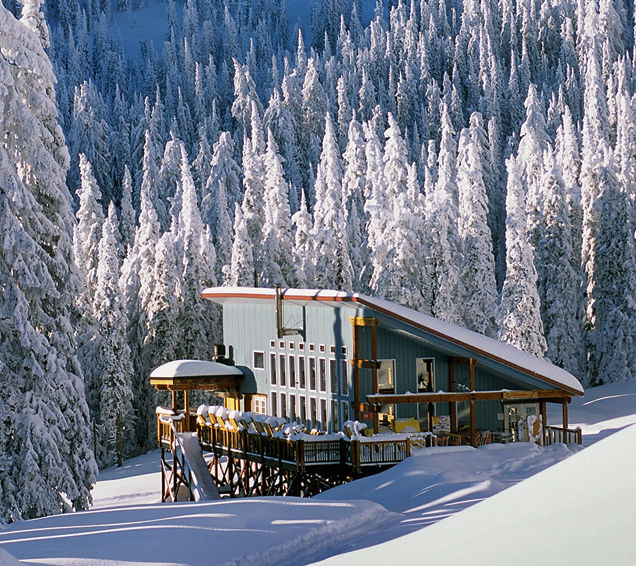
Image: Dave Heath
RED MOUNTAIN
Roseland, BC
THE TINY TOWN of Rossland, BC (pop. 3,653), surrounded by the rounded, weathered peaks of the Monashee Mountains, has about half the townsfolk it did 100 years ago. Back then, saloons and brothels lined its booming streets, and the gold mines on the south side of Red Mountain were among the most productive in Canada—before, that is, they went belly-up in the 1930s. The busted economy, however, didn’t squelch Rosslanders’ desire to have a rollicking good time come winter: The Red Mountain Ski Club built western Canada’s very first chairlift on 6,800-foot Granite Mountain in 1947, and the locals’ wintertime habit has pushed the resort’s boundaries ever since.
Today, six lifts serve 87 runs on Red and its adjacent peak, Granite Mountain, but Red’s still the kind of place where you can find your own little piece of the wild Canadian West. That’s partly because it’s easy to ditch whatever crowds you might encounter: A "ski anywhere" policy gives skiers and snowboarders access to the entire circumference of both peaks—that’s 1,685 acres of terrain (with 2,500 more acres in the backcountry) and a whopping 2,900 vertical feet. In fact, Red Mountain’s reputation for hair-raising steeps and chutes, and powder as ticklishly light as champagne, means that it regularly draws skiers from Australia and Europe, who happily spend a day on a plane for the chance to partake of one of the Holy Grails of untamed fall-line skiing. It’s one of the few resorts in the world where even marked, inbounds, double-black-diamond runs come with the recommendation that your first run be in the company of a guide or a local expert.
And if all this downhill powder should do a number on your knees (which after a few days it likely will), just strap on your skinny skis and pop across the road, where the Black Jack Cross Country Ski Club maintains 19 miles of groomed trails. If even that seems like too much effort,then consider calling up Le Petit Fromage—whose guides will lead you to a cabin in the woods, where wine and a hot pot of cheese fondue await. And if even the thought of that luxury should cause you to tire? Stick to plying Rossland’s broad main street, lined with false-fronted buildings dating back to 1901. With so few bars, you’ll quickly become familiar with your fellow imbibers, evidence that, though the mountain is large, Rossland is a small town at heart.
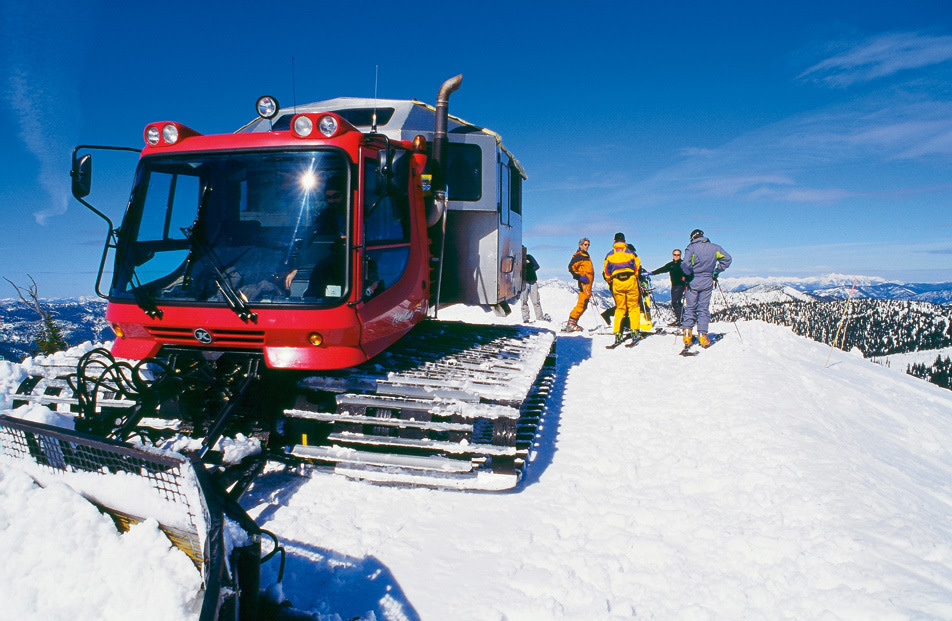
BALDFACE LODGE
Nelson, BC
THE QUEST for uncrowded alpine serenity need not preclude you from living in high style. Case in point: Baldface Lodge, a resort comprising of six timber-frame chalets just a five-minute helicopter ride from downtown Nelson. The only development atop a secluded ridge, Baldface houses a gourmet restaurant, a bar, a cedar sauna and a cadre of on-call massage therapists—all on the edge of the expansive backcountry of the Selkirk Range.
Every winter’s day since it opened in 1999, Baldface has divided its 36 guests among three Sno-Cats and—via a network of ridgetops that stretches endlessly toward the jagged horizon—delivers them to the edges of powder-laden bowls and plunging chutes. Expert guides steer skiers away from avalanche danger and toward epic steeps that begin above the tree line and end at the bottom of the valleys. Typically, you’ll log 8 to 12 runs a day before returning to the flickering hearth, a warm pot of soup and the cozy bar, where, as with everything at Baldface, there is never a line of any kind.
Dinners of seared wild salmon, beef tenderloin or whatever else chef Mark Kohl has dreamed up sometimes are served family-style, followed by dessert, after which you can lounge on the leather sofas or indulge in an evening massage before your eyelids grow heavy with well-earned exhaustion. When the sun strikes your frost-glazed window, it’s time to pull on your silk underwear, collect your avalanche beacon and do it all again.
But don’t let the steaks and saunas fool you—a day of crashing through BC’s backcountry powder is hard work, so come with your legs primed. In fact, Baldface is perhaps the only ski resort that recommends a pretrip workout regimen on its Web site.
WHITEWATER WINTER RESORT
Nelson, BC
DON’T BE SURPRISED if, as you’re approaching the parking lot of this midsized resort in the Selkirks, just south of the historic town of Nelson, BC, you think you see a yeti. Powder-caked, plank-wielding hitchhikers are common along the access road en route to Whitewater, owing to the myriad, out-of-bounds lines off the mountain’s backside, which lead skiers and snowboarders through prime terrain and to the highway’s edge. It’s common courtesy around here to pick them up and get them back to the ski base.
Whitewater is foremost a locals’ hill, supported by the townsfolk of Nelson, where one out of every three residents carries a season pass—but its 48 trails, 1,300-vertical-foot grade and 45-50 feet of snow per year are easily worth crossing an international border for. Two double chairs serve the resort’s north and south faces, which are located in the shadow of the storm-trapping Ymir ("WHY-mur") Peak. Head to the Silver King chair for rolling beginner runs and cedar-studded cruisers, or the Summit chair for hollowed-out bowls, swollen mogul seas and 35-degree pitches that dive headlong into a powder-cloaked forest. Down at the bottom, on the second floor of the post-and-beam lodge, you can refuel at the uncommonly good Fresh Tracks Café, where the lowbrow corndog fare you might expect from a modest ski resort’s menu has been abandoned in favor of puffy, warm samosas and seared wild coho salmon with salsa verde aioli.
For nonskiers, the late-19th-century mining and logging town of Nelson, set on the shores of Kootenay Lake, is an ideal setting for wintertime strolling, stuffed as it is with picturesque Victorian homes, stone storefronts and cozy coffeehouses. To unwind, take a side trip to the mineral hot springs in the little village of Ainsworth, 45 minutes up the road. After a long, leisurely dip, you, like the Portland steamboat captain who founded the town in 1883, might just fall in love with British Columbia and never come back.



